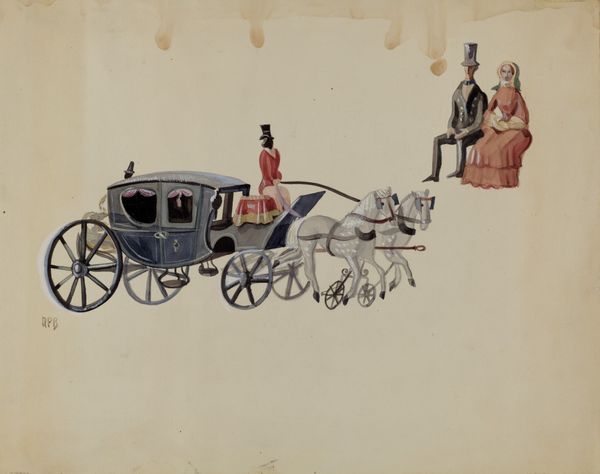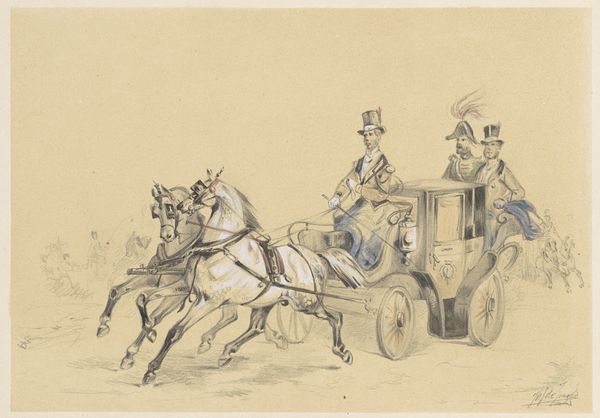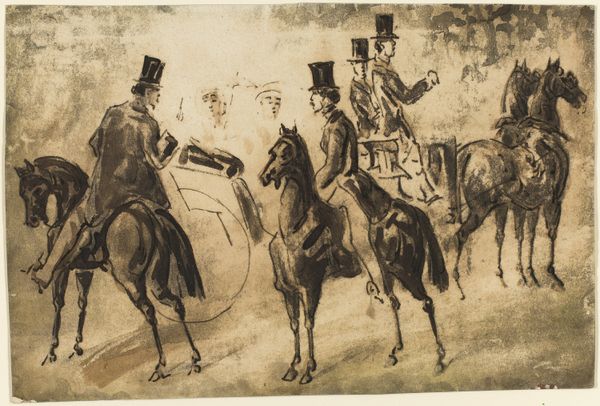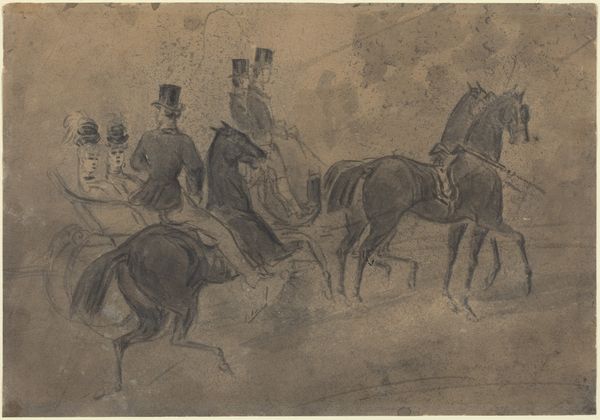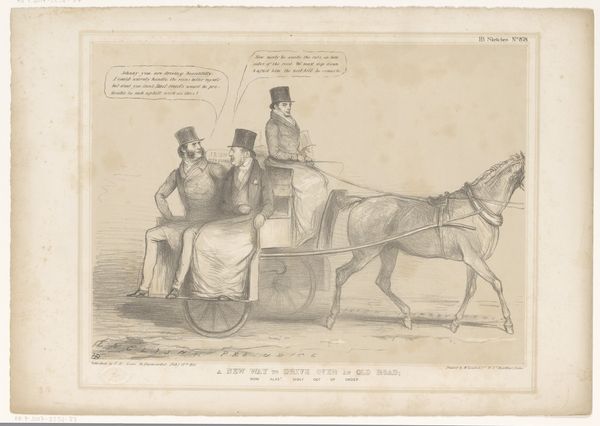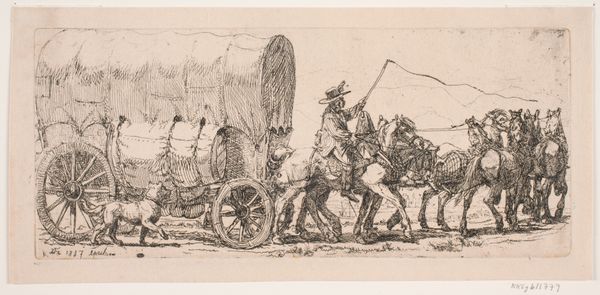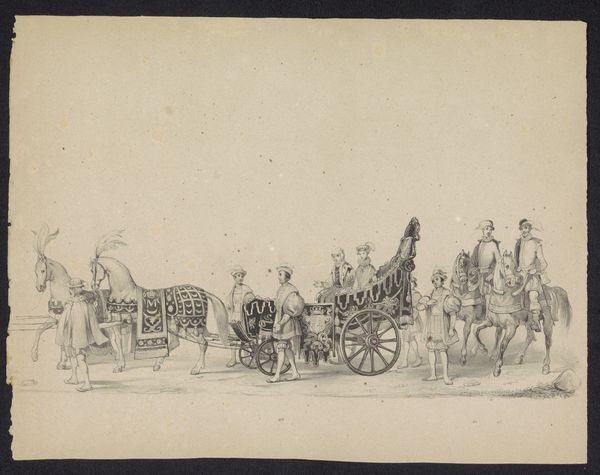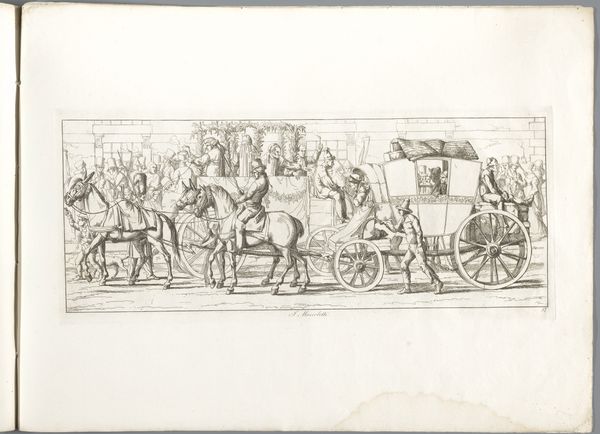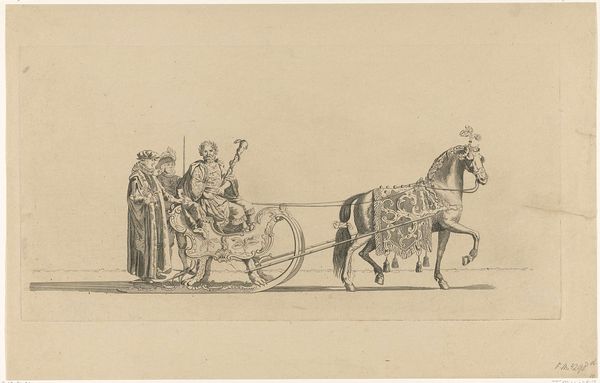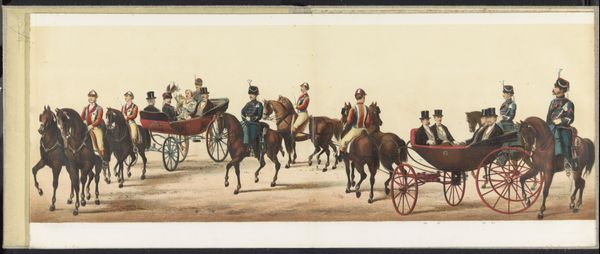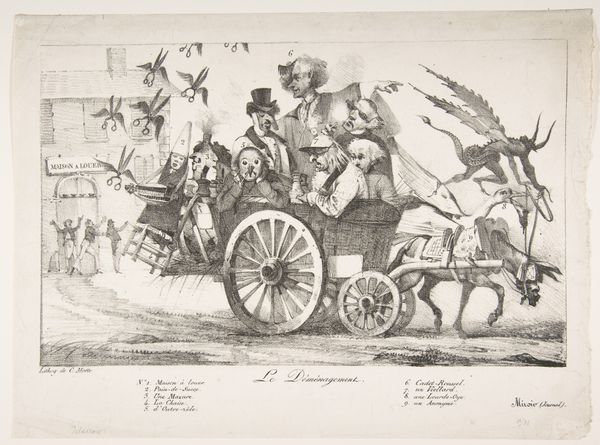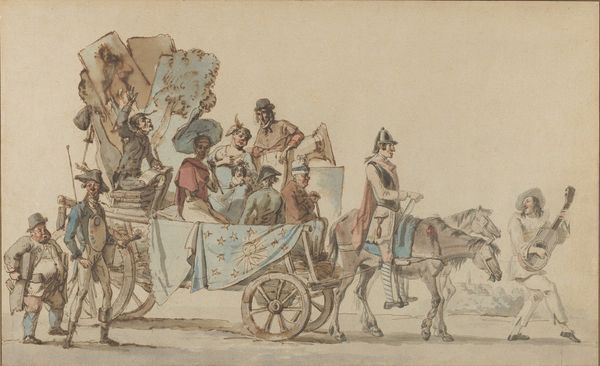
Dimensions: 8 1/4 x 13 1/8 in. (20.9 x 33.3 cm)
Copyright: Public Domain
Editor: Here we have Constantin Guys’ "Women in a Carriage," likely created sometime between 1815 and 1892. It’s a watercolor and charcoal drawing, and it gives me a sense of bustling city life, viewed from a distance. What social dynamics do you think Guys was trying to capture here? Curator: This piece is ripe with possibilities. The very act of depicting women in transit, likely upper-class women given the carriage, opens up a conversation about gender and mobility in 19th-century urban spaces. Who had the privilege of moving freely, and whose movements were restricted? Notice how the male figures at the front command the scene, directing both the horses and, by extension, the women. Editor: I see what you mean. There’s definitely a power dynamic at play. So, would you say this artwork is commenting on that power imbalance? Curator: Absolutely. It’s inviting us to question the subtle yet pervasive control exerted by men over women's lives, even, and perhaps especially, within the supposed comforts of wealth and status. How might the experience of women from different socio-economic backgrounds differ in similar circumstances? The umbrellas, for example, suggest protection from the elements but perhaps also function as a shield from the direct gaze of the public, implying a vulnerability, wouldn't you agree? Editor: That's a really interesting perspective. I hadn't considered the umbrella as a form of protection from more than just the weather. This has given me a lot to think about. Curator: Indeed. By understanding the artwork's social context, we reveal its potential for initiating vital conversations about intersectionality, representation, and social power. It is so much more than simply a period cityscape.
Comments
No comments
Be the first to comment and join the conversation on the ultimate creative platform.
